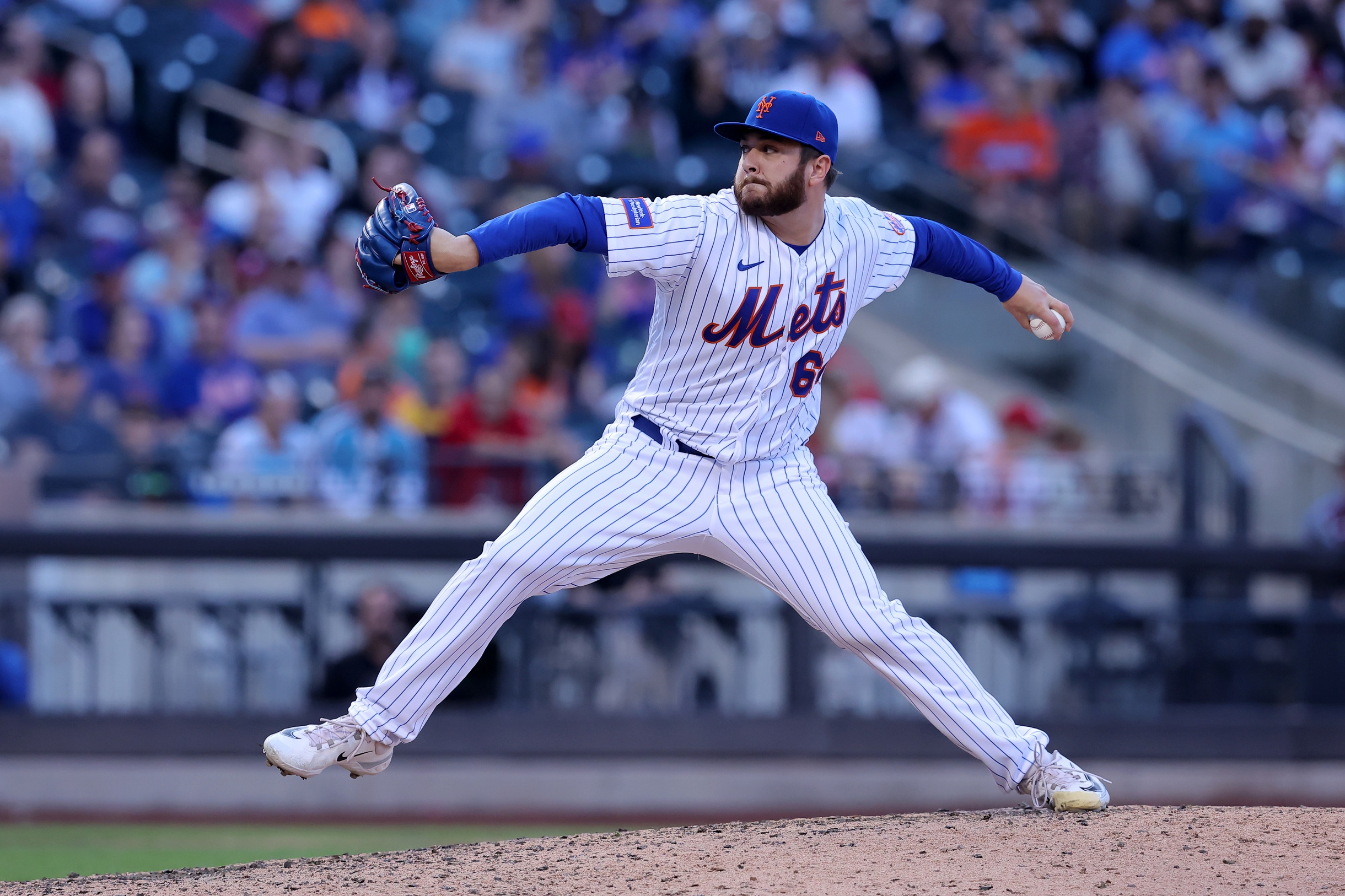When the White Sox intimate that first round pick Billy Carlson has Gold Glove potential as a shortstop, or scouting director Mike Shirley terms describes his defense as "some of the best I’ve ever seen at the amateur ranks," rival scouts don't raise any dispute. It's the sort of ability that jumps out at baseball people who aren't even looking for it.
"My son is a senior in high school and his team played Billy Carlson’s team, Coronado," said White Sox assistant pitching coach Matt Wise. "I was like, ‘Who is that?' His pregame work and the way he plays; he’s smooth as butter, man."
Instead, the skepticism spread well across the industry centers around Carlson's offense. The White Sox point to his improved performance on the showcase circuit over the past year and Carlson's twitchy athleticism as evidence of his emergent potential, but the criticism has long been loud enough for the teen himself to be aware of it, and act on it.
"I kind of got into some new coaching," Carlson said on draft night. "Got some new coaches I worked with when I was really young. Getting them back to the development of my career was huge and I feel like we are barely scratching the service as far as the hitting side. I feel like there are a lot of good years coming with the stick. I don’t think it needs to be a worry for anyone."
That new coaching Carlson refers to is an operation called 108 Performance (a reference to the number of stitches on a baseball, not the Rate Field section), led by its founder Eugene Bleecker. As Carlson alluded to, Bleecker has known him since he was nine years old, back when his training facility was based in Southern California, before he moved it to Knoxville in 2022.
Partnering with a biomechanical lab in the earlier stages of his business, Bleecker might be best known for the distinctive water tank exercises that Paul Skenes has made a regular part of his routine at his guidance, and Carlson has a similar program for developing and balancing his rotational force. For someone who can namedrop Skenes as a client, Bleecker makes more reference to his work with Tommy Troy and Bryce Ranier when talking about Carlson, since they're all shortstops who bloomed into first-round picks despite industry concerns about their hit tools. The coffer of premium talent that has passed through 108 Performance's doors provides some heft to Bleecker's assessments, which don't lack for confidence either here, or in a hype reel he posted to his company's YouTube channel.
"The way that they looked at [first overall pick Eli] Willits, they looked at the floor as a guaranteed big leaguer," Bleecker said. "The way they looked at Willits is the way they should have looked at Billy, but with a much bigger ceiling. The surest tool in the entire draft is Billy's glove. When you start looking at where he was getting to offensively, I think he's got a shot to be a really special player. I see the floor as a combination of Rey Ordoñez with the glove and a Jose Iglesias-type bat, but on the upside which is where I think he's going to land a whole lot closer to, I see it way closer to [Fernando] Tatis [Jr.]"
Carlson and Bleecker reconnected after his sophomore year, initially due to the infielder wanting to work on his defensive game, and refine the mechanics of his throwing. Like most superlative athletes playing against inferior competition, Bleecker describes Carlson as more comfortable moving at high speeds than slowing down, but they found success instructing him to brace his throws against his front leg for more power, allowing time to unwind his full arm action.
Bleecker says Carlson can now hit 98 mph when throwing across the diamond, and those results encouraged them to move on to his swing. He heavily praises Carlson's proprioception, the teenager's internal sense of his lanky 6-foot-1-inch frame and how it moves in space, and how it enabled them to make more progress than most via Zoom sessions. But both of them have spent the past year heavily flying between Los Angeles and Knoxville to work together more directly, with the latter location conveniently close to where Carlson had committed to play college baseball at the University of Tennessee and conducted his pre-draft workout with the White Sox. The White Sox drafted him with the 10th overall selection and paid him slot value to headline their 2025 draft class, which they officially announced as in the fold on Wednesday.
While the fluidity and athleticism the Sox rave about was always apparent in Carlson's hand path, Bleecker's noted a lack of weight transfer in his lower half. Similar to what Yasmani Grandal used to say about his right-handed swing, Bleecker advises that "if you can throw hard, you can hit the ball hard," but they needed to harness the same kind of rotational force that's evident when Carlson unleashes a throw across the diamond.
"When he was getting to landing before, his weight was too far on his backside at landing and his hips were opening up too far," Bleecker said of Carlson's old swing. "It was getting him stuck and he wasn't able to leverage everything through the ball. Now that he's started getting to his front side, he's able to pin it to the ground, hit against it, get the barrel there in a shorter window of time with a better path to the ball, and really start to impact the ball a little bit different. Even off the tee, we saw his exit velos go up to 105 mph. That's really special. As an athlete, it's really freak-show stuff."
Not unlike Colson Montgomery, Carlson's "greyhound"-like build makes him better suited for staying tall into his stride, so that he doesn't pop out of his crouch and prompt unnecessary head movement. But his closed stance cues him to coil inward (or counter-rotate) before exploding forward. While the front hip movement in the provided video above (Bleecker shared them, Jim Margalus edited it together) is the most noticeable change, Bleecker cautions that Carlson's front shoulder is actually where the movement starts. Drills that have Carlson start with a wide leg base are designed to reinforce that the coil should start with his upper body.
Carlson's power emerged as a senior, combining for eight home runs between preseason and regular-season work, with Bleecker noting his extra-base pop bloomed usually right after Zoom sessions in a way that suggests he has more potential to respond to regular intensive instruction. The output made the 15-to-20-homer long-term projections for him less of a purely physical bet, and more of a reflection of his swing's progress. And the general proficiency Carlson showed as he pulled off this swing overhaul, backing it up with improved contact rates in showcase events across his senior year, drives Bleecker to argue this is a different case than just hoping an elite athlete can figure out his way to having a big league-caliber hit tool.
"There are some guys in this game that lean on the skill side," Bleecker said. "They're not the same kind of athlete, but the skill of hitting, that's where they exceed. Then you have other guys that lean on the athlete side. That's where the draft is very much going a little bit wrong these days. Yes, looking at guys' bodies is very important and I think it's very beneficial. But when you overvalue the body and undervalue the skill, you're going to be left with a whole bunch of guys who can run and jump, but can't hit. Billy has a very unique combination of both of those things, which is why the ceiling is so high."






